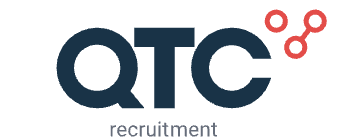Written by Rinesa - 4 Minutes reading time
Breaking down bias in recruitment and hiring

Recruitment and hiring are fundamental processes for every organisation’s success. However, despite efforts to improve diversity, equity, and inclusion (DEI) in the workplace, reducing hiring bias continues to be a pervasive problem. From unconscious bias in recruitment to affinity bias, there are many ways in which bias can seep into the recruitment process and lead to inequitable outcomes.
To address this issue, organisations must take proactive steps to reduce hiring bias and create a more equitable recruitment and hiring process. This requires a deep understanding of the different types of bias that can impact recruitment as well as strategies for reducing their impact. By reducing bias recruitment, organisations can attract and retain top talent from a diverse range of backgrounds and build a more inclusive workplace culture.
In this article, we will delve into the different types of bias that can impact recruitment and hiring, as well as explore strategies and best practices to remove hiring bias. By breaking down bias, organisations can build a stronger, more diverse, and more successful workforce, which is critical for long-term growth and success.
Types of bias in recruitment and hiring
There are many different types of bias that can impact recruitment and hiring. Some of the most common include:
Unconscious Bias Hiring: Unconscious bias in recruitment refers to the biases that we hold but are unaware of. These biases are often deeply ingrained and can be difficult to identify and overcome.
Affinity Bias: Affinity bias refers to the tendency to favor candidates who are similar to us, whether it be in terms of race, gender, age, or other factors.
Halo or Horn Effect: The halo or horn effect refers to the tendency to form an overall positive or negative impression of a candidate based on a single characteristic or trait.
Confirmation Bias: Confirmation bias refers to the tendency to seek out information that confirms our preconceived notions and ignore information that challenges them.
Anchoring Bias: Anchoring bias refers to the tendency to rely too heavily on the first piece of information we receive when making decisions.
hiring recruitment process ineffective
Strategies for breaking down biases in recruitment and hiring
- Develop a clear job description: A clear job description is critical to attracting the right candidates and removing hiring bias. Make sure the job requirements are clearly defined and that you are looking for the skills and experience needed for the job, rather than simply seeking candidates who fit a particular mold.
- Diversify your recruiting sources: Many organisations rely on the same recruiting sources, which can limit the diversity of the candidate pool. To reduce bias recruitment, consider diversifying your recruiting sources and casting a wider net. This may involve partnering with community organisations, attending job fairs, or using social media to reach a wider audience.
- Blind resumes: To reduce the impact of unconscious bias hiring, consider implementing blind resumes, where candidate names and identifying information are removed from the resume. This can help ensure that candidates are evaluated solely on their skills and experience rather than any personal characteristics.
- Standardise the interview process: Standardising the interview process can help reduce hiring bias by ensuring that all candidates are evaluated on the same criteria. This may involve using a structured interview process with a set of standardised questions or having multiple interviewers to ensure a more objective evaluation.
- Use objective assessment tools: Objective assessment tools, such as skills tests or work samples, can help reduce hiring bias by providing a more objective evaluation of a candidate’s abilities. Employers can use this tool to ensure that unconscious bias hiring is prevented.
- Provide bias training: Providing bias training to hiring managers and recruiters can help to increase awareness of unconscious bias hiring and provide strategies for identifying and removing hiring bias in the recruitment process.
- Monitor and evaluate the process: Regularly monitoring and evaluating the recruitment and hiring processes can help identify areas where unconscious bias in recruitment may be present and make adjustments to create a more equitable process.
The need to reduce hiring bias
Breaking down bias in recruitment and hiring is a critical step in creating a more diverse and inclusive workforce. By implementing strategies such as blind resumes, standardising the interview process, and providing bias training, organisations can create a more equitable process that attracts and retains top talent from a variety of backgrounds.
Are you an employer looking for suitable professionals and you need help to reduce your hiring bias? QTC Recruitment has extensive experience and the largest (online) network in Northwestern Europe in the Life Science industry. Sometimes someone looking from the outside might just be what your organisation needs. Make sure to check out how you can be helped here.
Also published on TheHRdigest.com
Want to stay informed about current Life Science and recruitment news on a regular base? Then register here for free.
